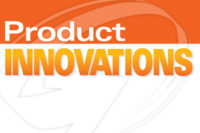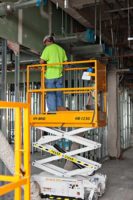Mobile tech maximizes turnarounds

Turnarounds (TAR) are a costly, complex necessity for oil and gas companies. During these strategic events, oil and gas companies are more vulnerable to business and operational risks, especially if the TAR is poorly executed. However, a TAR does not necessarily have to equal trouble.
To ensure a fairytale ending to a TAR story, oil and gas companies can include mobile technology to implement their TAR strategy. When a TAR is done correctly, it can have a profound impact on the company, both internally from a business and operations perspective, and externally from a reputation-building standpoint.
A few of the ways mobile technology can help oil and gas companies efficiently manage their TAR include:
Ensuring greater onsite safety
TARs can be challenging, requiring access to calibrated and fully charged safety devices at a moment’s notice. Onsite solutions can facilitate compliance by providing around-the-clock supply and return of safety equipment. Research has shown this to be beneficial in providing a significant cost savings for the customer as more time is spent on tools and less on maintaining or replacing equipment.
Creating additional workflow efficiencies
At the onset of a TAR, a number of isolation activities must be completed, including valves lock-out-tag-out, electrical, blinds/spades, etc. These activities have historically required a significant amount of time to complete, since they required the manual completion of work orders and updates to work logs regarding their status.
Today, however, thanks to technological advances, oil and gas companies are using radio frequency identification (RFID) technology to create efficiency when it comes to reporting. RFID allows companies to track activity and monitor the location and condition of equipment.
For example, in one of BP’s German refineries, this functionality has been mobile and RFID enabled, and linked to a Control of Work portal. Now the company has access to near-real-time updates via the wireless infrastructure, as control room operators can instantly view the current status of all isolations.
Shortening turnaround duration
Mobile solutions are now available that result in shorter, more efficient and effective TARs. These digital tools enable real-time situational awareness and a streamlined work and communication process that helps to ensure tasks are completed correctly. By providing onsite TAR workers with mobile devices, operators can feed them real-time custom workflows that outline step-by-step guidance of those tasks they are responsible for. Not only are these mobile tools immensely beneficial for workers, they are also helpful for operators who want to know the status of task execution and work package completion at any point during the TAR. They also help mitigate operational issues that may cause delays.
It’s time for oil and gas companies to move from manual to digitized operations. Companies must take advantage of the mobile technology available to maximize efficiency and safety in a TAR scenario.
Looking for a reprint of this article?
From high-res PDFs to custom plaques, order your copy today!





